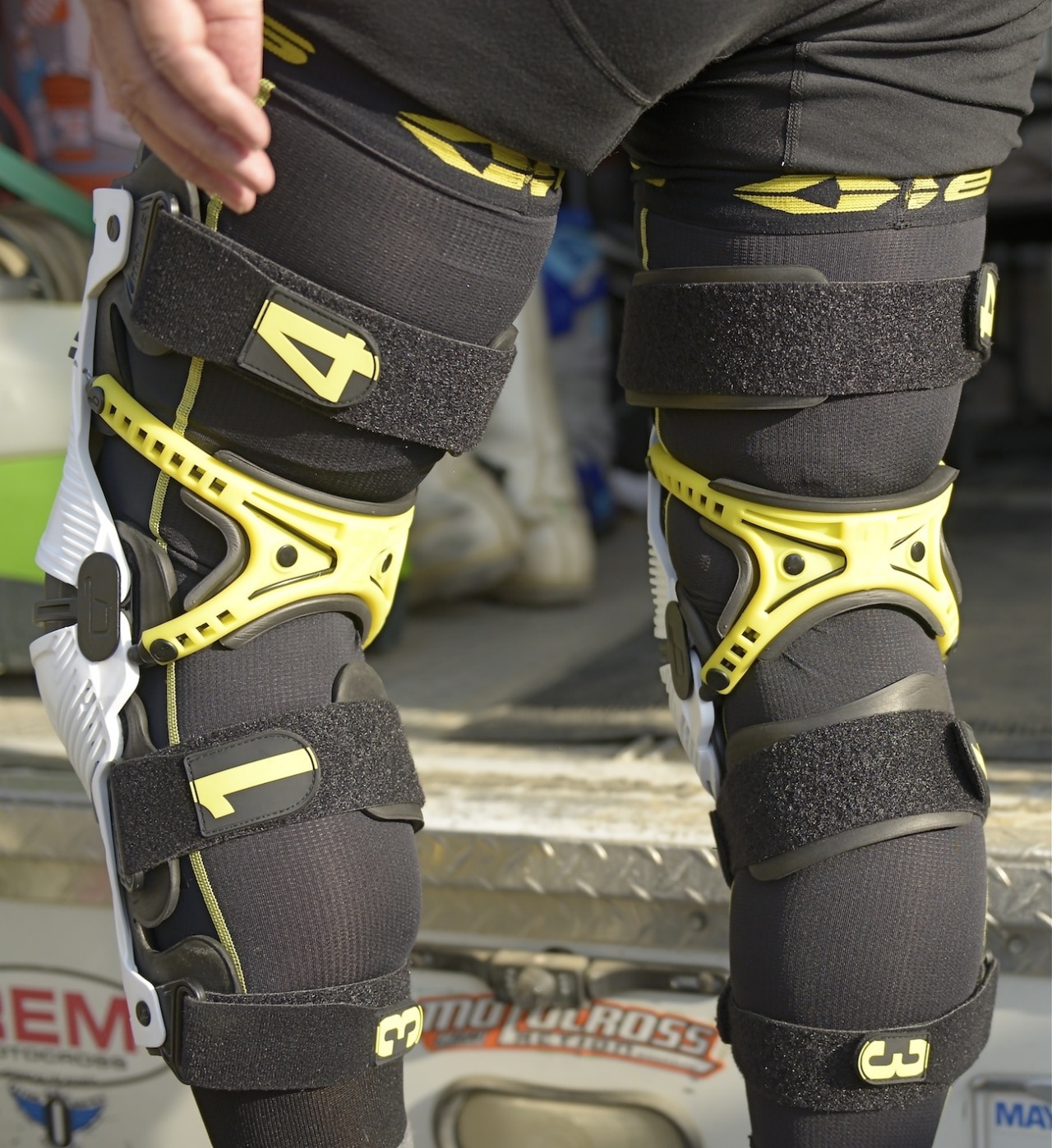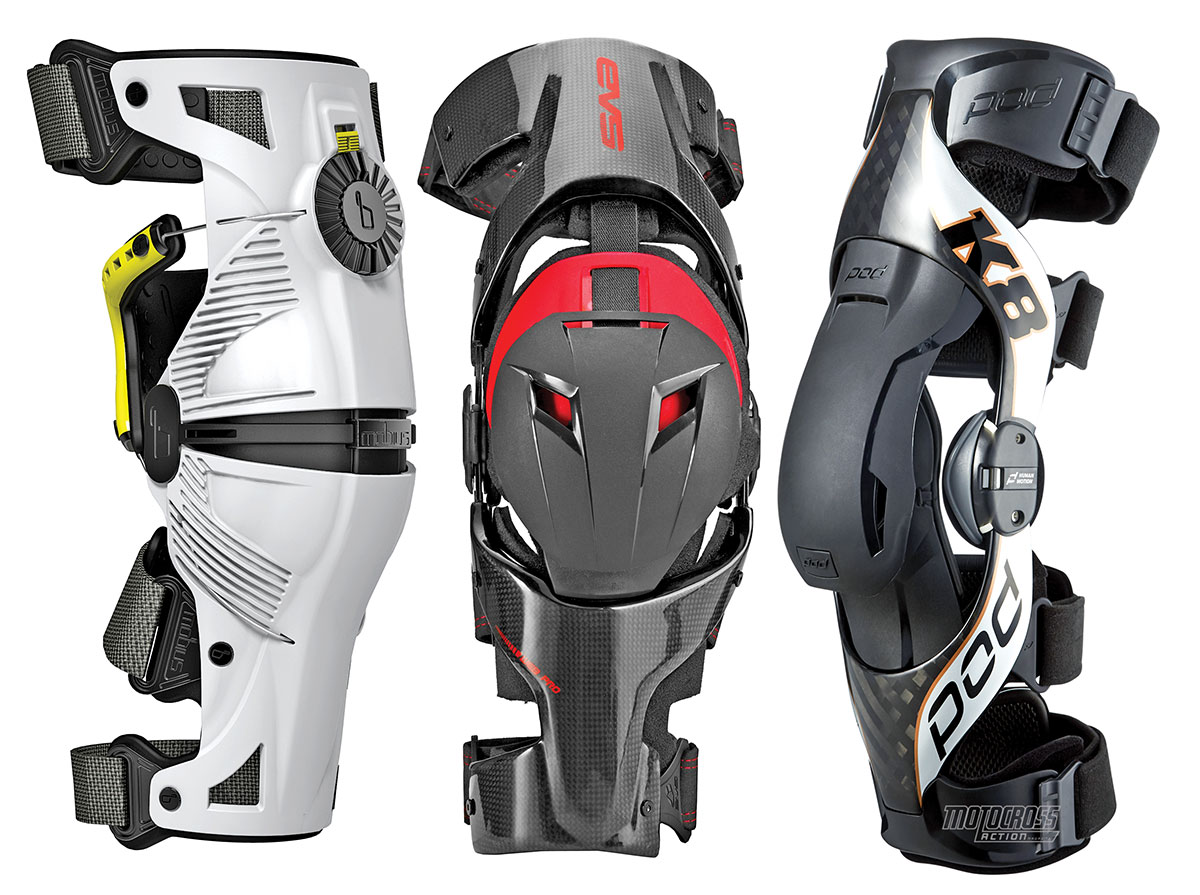TEN THINGS YOU NEED TO KNOW ABOUT KNEE BRACES
(1) Skeptics. Many riders feel knee braces are for those who have pre-existing problems with their knees. This used to be the way of thinking years ago, as knee braces were made to serve those with knee injuries. Over the years, however, companies recognized the need to offer protection to help prevent knee injuries from happening. Knee injuries account for 8 percent of total injuries in offroad riding, with the most common being ACL (anterior cruciate ligament) injuries. While 8 percent might not sound like a high percentage, the road to recovery from an ACL tear is about six months. Most often a torn ACL requires surgery to ensure the joint is stable and doesn’t cause further injuries down the road. The typical plastic knee guard only protects against impacts; it doesn’t protect against ligament damage as braces do. Medical research reports that knee braces reduce ACL injuries by 50 percent and MCL injuries by 700 percent.
(2) Broken femur. Many people believe that if a knee brace directs the force away from the knee, it has to go somewhere else. They feel they have to choose between a ligament tear and a broken femur, tibula or fibula. It is true that the force has to go somewhere, and with many of the older, more rigid braces, the entire force of the blow would be placed on those bones. Early motocross braces weren’t designed to dissipate the force of the blow; they were designed to protect the knee. Newer braces from companies such as Pod, Mobius, Alpinestars and EVS are designed to reduce the forces by distributing them first through the hinge, then to the frame, then to the flexible upper and lower cuffs, all of which lessen the force before it hits the bone. It should be noted that the longer the overall length of the knee brace, the more the load is lessened when it is transferred to the bones.
 Dean Wilson know a thing or two about ACL injuries.
Dean Wilson know a thing or two about ACL injuries.
(3) Heavy. Traditional knee braces were designed for medical treatment. Braces today are designed for sports performance, which means fewer moving parts, lighter weight and greater strength.
(4) Expensive. Compared to a knee reconstruction, quality knee braces are actually cheap. Six months off work, medical bills and a chance that you’ll never have the same range of motion are a high price to pay. As with helmets and boots, knee braces should be an essential part of your riding arsenal—and you get what you pay for.
(5) Movement. Today’s knee braces support natural human motion and do not limit or restrict your riding ability; of course, they can limit the range of motion if you desire. Remember, however, that when braces are put on incorrectly or are the wrong size, they are not as effective as they can be. It is important to read sizing charts and instructions carefully.
(6) Ride time. Every MXA test rider knows from experience that wearing knee braces for the first time feels foreign and awkward. The space between your knees and the bike changes, which throws off how you feel on the bike. You must push through the awkwardness until you adapt to the knee braces. The strange feeling will go away, and soon enough you won’t be able to live without them.
(7) Braces for free. Okay, nothing in life is free, but if you have good medical insurance, your provider can bill premium braces to your medical insurance (if that brand of brace has an FDA PDAC billing code). Braces from Pod, CTi and Don Joy are medically certified braces.
 The two most important straps are the ones directing above the knee joint and directly below.
The two most important straps are the ones directing above the knee joint and directly below.
(8) Straps. Most knee braces have four straps. Guess what? Only two of them do most of the work. The straps directly above and below the knee are the most important straps, as they provide the support for the hinge to dissipate the forces. The other two straps are there to offer more leverage and support. We recommend strapping the brace on in a certain order. First, the strap above the belly of your calf (below your knee), then the strap directly above your knee, next the strap on your thigh and finally the strap below your calf.
(9) Brace early. It’s never too early to brace your knees. Soft-tissue damage to young kids’ knees can interfere with growth and development for the rest of their lives. Parents should take knee braces as seriously as they do helmets, boots and chest protectors. Leading knee brace companies offer youth braces that provide the same support and function as adult braces.
(10) Equality. All knee braces are not created equal, which is good because all knees are not created equal. Whether your knee anatomy is bony, wide or long try on as many knee braces as possible to find the one that fits you best. Do your research to truly understand which brace will offer the best level of support, comfort and protection for your knee.







Comments are closed.